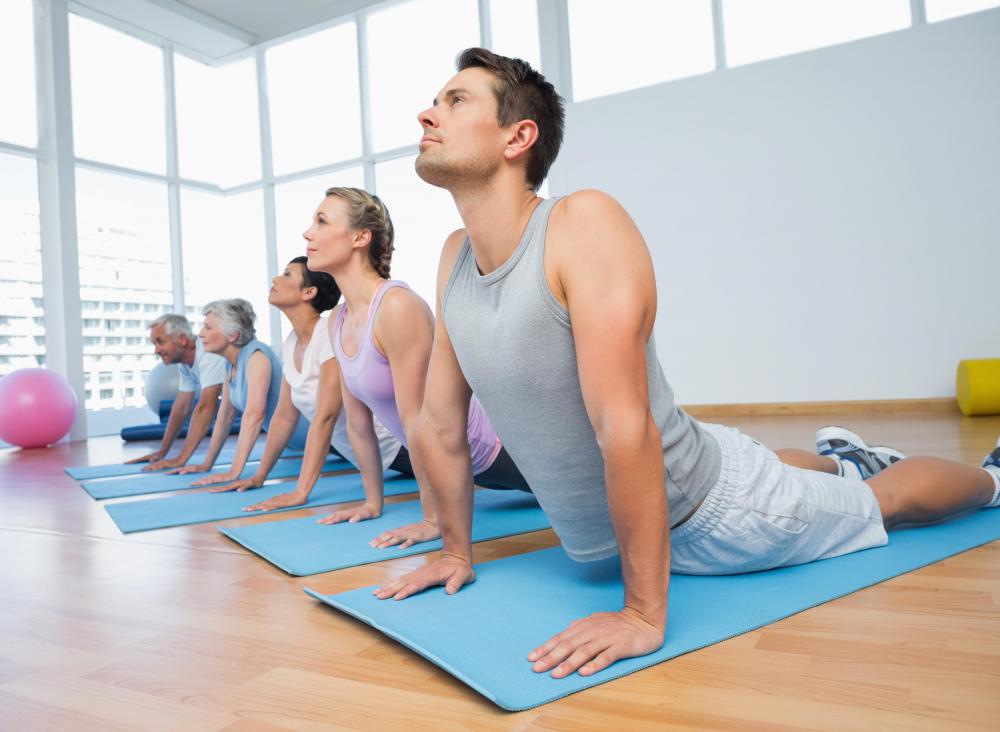At WiseGEEK, we're committed to delivering accurate, trustworthy information. Our expert-authored content is rigorously fact-checked and sourced from credible authorities. Discover how we uphold the highest standards in providing you with reliable knowledge.
What Is Taoist Yoga?
Taoist yoga, also known as “flow yoga” and “yin yoga,” refers to a modern yogic art that combines Indian and Chinese cultural traditions. This practice uses stretching, visualization, and meditation alongside gentle movements. These are believed to build strength, promote self-healing, and restore a balance between the body and the mind. Taoist yoga has three primary health goals, and its postures are designed to target areas that require special attention. In addition, the practice of Taoist yoga teaches values and principles that can be applied to everyday life.
It is believed that Taoist yoga is based on two sources. The first is the Chinese tradition dao yin, which views the "Tao" or “the way” as the core component of reality. Tao is made up of two opposite aspects called “yin” and “yang” — yin is the nurturing side of the universe, while yang is aggressive and powerful. Early practitioners of dao yin cultivated an understanding of yin using nourishing and gentle exercises. Eventually, Taoist yoga incorporated breathing techniques, spiritual teachings, and postures from India’s Hatha yoga.

Taoist yoga is treated as a personal practice that caters to the specific needs of an individual's body. This yogic art has three main goals: to increase the nourishing yin energy moving throughout the body, to develop a deeper awareness of each body’s subtleties and why they are interconnected, and to increase physical flexibility as a means for greater physical, spiritual, and mental well-being. Regular practice is believed to help a person achieve these goals and brings him closer to experiencing the Tao. This experience is likened to a state where one is comfortable with the present and able to let go of negative emotions and perceived imperfections.

During a Taoist yoga class, students perform warm-up activities similar to those done in Hatha yoga. The instructor then leads the class in movements and stretching exercises based on the principles of acupuncture. These exercises are supposed to open channels connected to the 12 internal organs, improving their health or relieving problems afflicting them. Feelings of tightness in the body and mind are addressed through yoga postures. The class often comes to a close with some chanting, breathing techniques, and meditation.

The emotional and mental well-being promoted by Taoist yoga extends well outside of class. Practitioners believe that it is due to the principle of ahimsa, a non-violent approach that calms the body and ego. Ahimsa teaches the practitioner to accept one’s abilities and limitations while teaching the body and mind techniques that help them grow, accept themselves compassionately and seek excellence within their limits. Taoist yoga also teaches practitioners to extend this same patience and compassion to other people.
AS FEATURED ON:
AS FEATURED ON:














Discussion Comments
Taoist yoga is not as popular as other types of yoga so it can be difficult to find classes if one is not in an urban area. There are instructional DVDs however that can be used at home. It's not the same as learning in person in a class but it's better than nothing. That's what I'm doing currently. I actually enjoy it a lot. I have seen a reduction in my stress levels and anxiety since I started learning Taoist yoga.
@ZipLine-- Yes, I think so. Taoist yoga is more gentle because it is mostly about stretching and breathing. It's a more meditative type of yoga that promotes healing. So I think it's perfect for someone like you who needs a more gentle form of exercise. Although, you still need to learn from a Taoist yoga practitioner and you should never push yourself too far even while doing Taoist yoga. If you listen to your body and know your limits actually, most forms of yoga will not cause injury or pain. You just have to find out which poses are off limits for you in your current situation.
I have a back injury that I'm trying to heal with natural therapies. Unfortunately, regular yoga is too harsh for me. There are some yoga poses that make me uncomfortable or basically just cause pain. I need to do stretching and physical exercise, but I don't want to worsen my injury or experience more pain. Would Taoist yoga be more suitable for my needs? Does anyone here practice this type of yoga?
Post your comments